Epidermal growth factor receptor variant III in head and neck squamous cell carcinoma is not relevant for targeted therapy and irradiation
- PMID: 28427242
- PMCID: PMC5464818
- DOI: 10.18632/oncotarget.15949
Epidermal growth factor receptor variant III in head and neck squamous cell carcinoma is not relevant for targeted therapy and irradiation
Abstract
Background: The epidermal growth factor receptor (EGFR) is an important regulator of cell growth and survival, and is highly variable in tumor cells. The most prevalent variation of the EGFR extracellular domain is the EGFR variant III (EGFRvIII). Some studies imply that EGFRvIII may be responsible for the poor response to the monoclonal EGFR-antibody Cetuximab, used therapeutically in head and neck squamous cell carcinoma (HNSCC). Due to inconsistent data in the literature regarding EGFRvIII prevalence and clinical relevance in HNSCC, especially its predictive value, we examined EGFRvIII-transfected cell lines and patient tissue samples.
Results: In contrast to other recent publications, we were able to demonstrate EGFRvIII expression in HNSCC. However, we noted that the different detection methods yielded inconsistent results. Furthermore, our EGFRvIII transfected and EGFR wild type cell lines exhibited similar characteristics and response rates in the performed in vitro experiments.
Materials and methods: We conducted various inhibition and combined irradiation experiments using three EGFRvIII-transfected cell lines. Moreover, a patient cohort of 149 cases consisting of formalin fixed and paraffin embedded (FFPE) and fresh-frozen specimens was assayed via reverse transcriptase PCR (rtPCR) with gel electrophoresis and sequencing for EGFRvIII prevalence. In the rtPCR assays, we used five previously published EGFRvIII primers and EGFRvIII-positive glioblastoma tissue as a positive control. In addition, immunohistochemical staining was conducted.
Conclusions: EGFRvIII can be detected in HNSCC patient samples. Nevertheless, the low prevalence and similar response rates to targeted drugs and irradiation in vitro cast doubt regarding the clinical relevance of EGFRvIII in HNSCC.
Keywords: EGFR variant III; TKI; cetuximab; head and neck squamous cell cancer; radiation.
Conflict of interest statement
The authors declare no conflicts of interest.
Figures
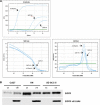
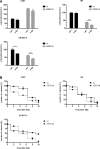
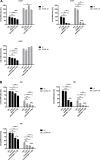

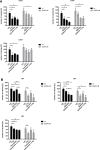

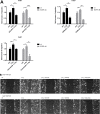
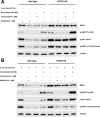
Similar articles
-
Mutant epidermal growth factor receptor (EGFRvIII) contributes to head and neck cancer growth and resistance to EGFR targeting.Clin Cancer Res. 2006 Sep 1;12(17):5064-73. doi: 10.1158/1078-0432.CCR-06-0913. Clin Cancer Res. 2006. PMID: 16951222
-
Cetuximab sensitivity of head and neck squamous cell carcinoma xenografts is associated with treatment-induced reduction in EGFR, pEGFR, and pSrc.J Oral Pathol Med. 2017 Oct;46(9):717-724. doi: 10.1111/jop.12545. Epub 2017 Jan 28. J Oral Pathol Med. 2017. PMID: 28036101
-
Challenges in EGFRvIII detection in head and neck squamous cell carcinoma.PLoS One. 2015 Feb 6;10(2):e0117781. doi: 10.1371/journal.pone.0117781. eCollection 2015. PLoS One. 2015. PMID: 25658924 Free PMC article. Clinical Trial.
-
Epidermal growth factor receptor (EGFR) and squamous cell carcinoma of the skin: molecular bases for EGFR-targeted therapy.Pathol Res Pract. 2011 Jun 15;207(6):337-42. doi: 10.1016/j.prp.2011.03.002. Epub 2011 Apr 29. Pathol Res Pract. 2011. PMID: 21531084 Review.
-
Molecular targeted therapies in the management of head and neck squamous cell carcinoma: recent developments and perspectives.Anticancer Agents Med Chem. 2013 Mar;13(3):389-402. Anticancer Agents Med Chem. 2013. PMID: 23092267 Review.
Cited by
-
Clinical Development of Molecular Targeted Therapy in Head and Neck Squamous Cell Carcinoma.JNCI Cancer Spectr. 2019 Nov 12;3(4):pkz055. doi: 10.1093/jncics/pkz055. eCollection 2019 Dec. JNCI Cancer Spectr. 2019. PMID: 32337482 Free PMC article.
-
Recent findings on the impact of ErbB receptors status on prognosis and therapy of head and neck squamous cell carcinoma.Front Med (Lausanne). 2023 Feb 2;10:1066021. doi: 10.3389/fmed.2023.1066021. eCollection 2023. Front Med (Lausanne). 2023. PMID: 36817764 Free PMC article. Review.
-
NOTCH1 Intracellular Domain and the Tumor Microenvironment as Prognostic Markers in HNSCC.Cancers (Basel). 2022 Feb 21;14(4):1080. doi: 10.3390/cancers14041080. Cancers (Basel). 2022. PMID: 35205828 Free PMC article.
References
MeSH terms
Substances
LinkOut - more resources
Full Text Sources
Other Literature Sources
Medical
Research Materials
Miscellaneous

